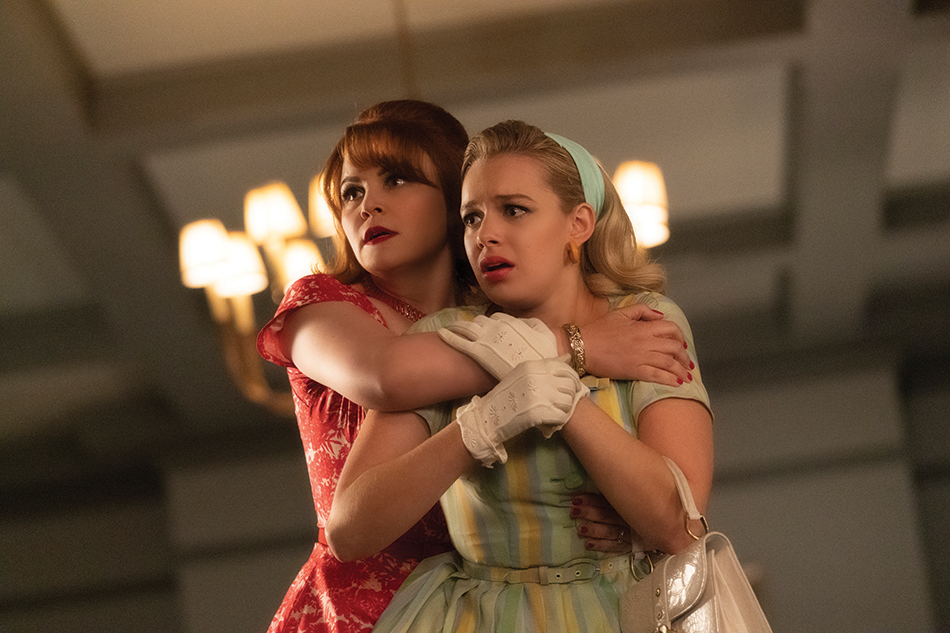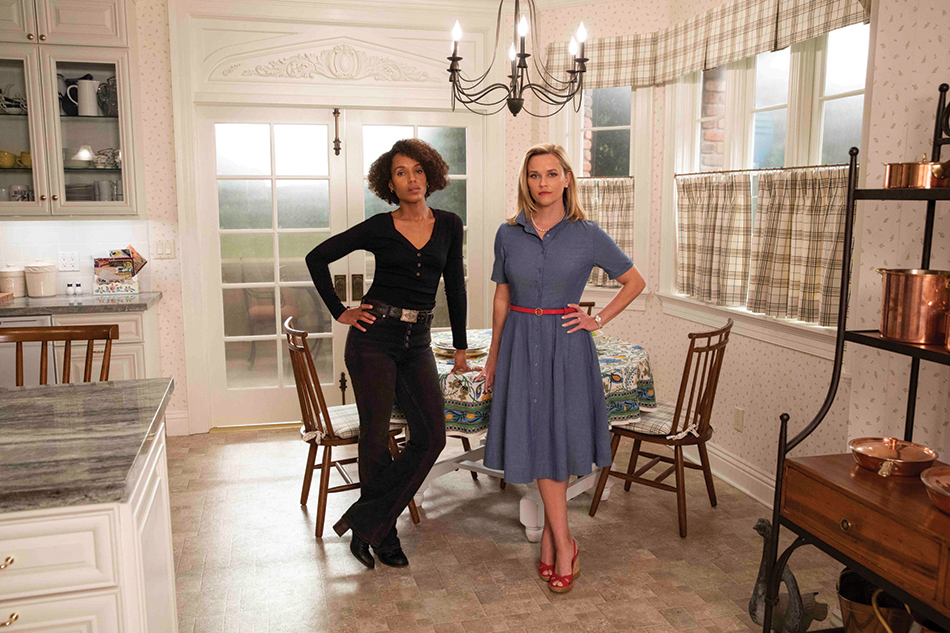Traditional TV Borrows from Streaming Frenemies
As streaming becomes more and more the viewing norm, the content of the Netflixes, Amazons and Hulus of the world, bold and binge-friendly, is increasingly affecting the programming viewers see on cable and broadcast. Producers and networks alike know they have to create edgier, more serialized content to keep viewers attached to traditional TV and keep those legacy platforms relevant.
It’s an expensive proposition, but many feel it’s necessary for old-school TV to hold its own amidst the newer competition. Chris Long, executive producer on the new Fox drama Deputy, said what’s on Netflix and the other streamers pushes Deputy, a western procedural cop show starring Stephen Dorff, to go the extra mile.
“It’s a really competitive landscape and we want to differentiate our show,” he said, talking about unique shooting methods that give Deputy a cinematic look. “It does not look like CBS or NBC, because we want to compete with shows on Netflix or Hulu or other platforms. It absolutely affects how we shoot it.”

With multiple television giants poised to launch streaming products, including NBCUniversal’s Peacock and WarnerMedia’s HBO Max, traditional TV programmers are borrowing from their digital frenemies in other ways. They’re rethinking the number of episodes a series should have per season, and even at times episode length. Everyone, it seems, is aiming for more gripping content.
“When other platforms are creating shows that people want to watch that are really smart, well-written and well-executed, I think it ups everyone’s game,” CBS Entertainment senior executive VP, programming Thom Sherman said at the TCA Press Tour in August. “We encourage our writers to take risks and be sophisticated and have the subtle nuances you see on streaming and cable.”
Prize Possessions
Broadcast is an afterthought at major awards ceremonies, and any cable network not named HBO has to hustle to stay relevant to judges. At the 71st Primetime Emmy Awards in September, top drama was between Game of Thrones and Succession on HBO, Better Call Saul on AMC, Bodyguard and Ozark on Netflix, This Is Us on NBC, Pose on FX and Killing Eve on AMC/BBC America. Game of Thrones won.
Multichannel Newsletter
The smarter way to stay on top of the multichannel video marketplace. Sign up below.
Top comedy was between HBO’s Barry and Veep, Amazon’s Fleabag and The Marvelous Mrs. Maisel, Netflix’s Russian Doll, Pop TV’s Schitt’s Creek and NBC’s The Good Place. Fleabag got the trophy.
When the Golden Globe Awards were given out earlier this month, best drama was between HBO’s Big Little Lies and Succession, Netflix’s The Crown, AMC/BBC America’s Killing Eve and Apple TV+’s The Morning Show, with Succession winning.
Best comedy was between Netflix’s The Kominsky Method and The Politician, Amazon’s Fleabag and The Marvelous Mrs. Maisel and HBO’s Barry. Fleabag won.

Viewers watched an average of four hours and six minutes of streaming programming on Netflix and Hulu last year, according to NPD Group, up 7% from the previous year. Broadcast and cable are emulating aspects of streaming to better connect with viewers. Dramas, for one, are less procedural than they used to be, and more likely to set story arcs across a season, not an individual episode. “They might be a little more open to more serialized storytelling than 10 years ago, when it was strictly episodic,” Michelle King, executive producer of Evil on CBS, said in August.
Procedurals always played much better in syndication than serialized shows. But as the aftermarket for broadcast shows evolves, the serialized stuff does just fine on the streaming platforms where they often end up after their broadcast premieres. “Serialized programs have as much of an opportunity to pick up an audience as procedurals,” media consultant Bill Carroll said. “And audiences seem to be more attuned to watching serialized shows.”
While broadcast and basic cable must still answer to advertisers who may be unhappy about risqué content, it’s clear they are game to push the envelope. Marc Cherry, who made his name with Desperate Housewives and now produces Why Women Kill for CBS All Access, sees a “tremendous” change to the television landscape.
“There are storylines we were not allowed to do on Desperate Housewives in 2004 that you see now on broadcast TV,” he said. “We’re inching toward more provocative stuff. It’s happening.”
Carroll sees it in the 10 p.m. hour in particular. “They can’t be as edgy as HBO and Showtime and Netflix, but broadcast is as close to the edge as it can reasonably get away with,” he said.
The series may not have the antiheroes that define streaming and cable hits, but Linda Ong, chief culture officer at Civic Entertainment Group, is increasingly seeing the emotional depth that defines peak TV on broadcast. She singled out This Is Us and New Amsterdam for drama that goes deeper and darker than what broadcast is known for. “The higher-end dramas are seemingly of the same world as the prestige dramas,” she said.
Chris Long mentioned “enormous leeway” from Deputy’s producers, eOne and Fox, when it came to requesting expensive things, such as a Russian Arm mobile crane setup to shoot a car crash, that make for a better-looking show. “It’s just, step up your game — better dialogue, better action sequences,” he said. “The fact is, [streamers] spend money on their programs to a level where it’s very competitive.”
Short and Sweet
The Netflix effect is also evident in the number of episodes some series are doing on broadcast. Streamers saw they could land A-list talent with 10-episode seasons, or shorter, and other platforms are borrowing from that playbook. NBC’s celebrated comedy The Good Place had 13 episodes per season, while season four has 14. Season one of Ripley on Showtime, based on the Patricia Highsmith novels, will have eight episodes. Season two of HBO drama Big Little Lies, which began last summer, had just seven. Fox series The Moodys, which aired in December, had six.
“Actors are interested in shorter orders,” King said. “The broadcast networks have to be open to that.”
Shorter seasons make it easier to reach high quality levels from start to finish. Liz Tigelaar, executive producer/showrunner of Hulu’s Little Fires Everywhere, which premieres March 18, got her start on such broadcast series as Once and Again and American Dreams. Producing eight episodes across two years, as opposed to 22 in 10 months, makes for better product, she said. So does writing all the episodes before production begins.
“The lead time really helps you craft a better series,” Tigelaar said. “From a creative standpoint, you’re not in the rat-race assembly line of production.”
While much of traditional TV remains allegiant to traditional episode lengths to keep the programming schedule intact, there are exceptions. The season four premiere of This Is Us ran for an hour and eight minutes. The Murphy Brown premiere on CBS last year went for an hour and five minutes.
Broadcast doesn’t have much of an issue disrupting the schedule when live events go long, Linda Ong noted. “There’s much more permission in the industry to be experimental with things like this,” she said.
Stacked Up
Broadcast and cable networks are also working to allow more binge viewing of their programs. Last summer, The CW revealed it had secured in-season streaming rights to all new series going forward, the announcement coming when its deal with Netflix ended. The CW can stack each episode of a new series on its digital platform, meaning a viewer who comes to the show late can catch up in short order.
“That allows us to control our branding and bring our fans back to us,” The CW chairman and CEO Mark Pedowitz said.
When FX shows premiere in the coming weeks, the norm will be for two episodes to run on premiere night, a happy medium between bingeing and the traditional weekly release. Comedy Breeders airs two of its 10 episodes March 2, as does Better Things March 5.
“We’re going into, let’s drop two, let’s drop three,” FX Networks and FX Productions chairman John Landgraf said.
When The Moodys aired on Fox in December, its six episodes ran across three nights.
Broadcast and cable are also acknowledging the significant role the streamers play in how back episodes are watched. Promos for NBC drama Good Girls, which debuts season three Feb. 16, encourage viewers to watch seasons one and two on Netflix.
“You can’t count on everyone watching live,” said Dan Fogelman, creator/executive producer of This Is Us, which streams on Hulu after premieres. “That’s the challenge for all people doing our job — how are people consuming media?”
Modern viewers also like controlling the flow of episodes with their remote. On streaming, they don’t need the reminders and exposition that eat up storytelling time in a show on a traditional platform. ABC’s Grey’s Anatomy has built a new generation of fans among teens, thanks to having 15 seasons on Netflix. “The show is experienced differently when you watch a whole bunch of them,” said Krista Vernoff, Grey’s showrunner and executive producer.
Among FX’s other premieres coming up, a couple are premiering on Hulu, part of a new hub known as FX on Hulu. Alex Garland’s limited series Devs begins March 5 on FX on Hulu, and ’70s women’s rights drama Mrs. America begins on the streaming hub April 15. FX has not announced if the shows will also appear on linear TV.
Fargo premieres on FX April 19, and pops up on Hulu the next day. Creator/executive producer Noah Hawley spoke about delivering two versions of an episode to the network — with commercial breaks and without. “I can’t say I would miss having to put commercials in,” he said. “But those are the things I think about in approaching the medium in 2020.”
Michael Malone is content director at B+C and Multichannel News. He joined B+C in 2005 and has covered network programming, including entertainment, news and sports on broadcast, cable and streaming; and local broadcast television, including writing the "Local News Close-Up" market profiles. He also hosted the podcasts "Busted Pilot" and "Series Business." His journalism has also appeared in The New York Times, The L.A. Times, The Boston Globe and New York magazine.

